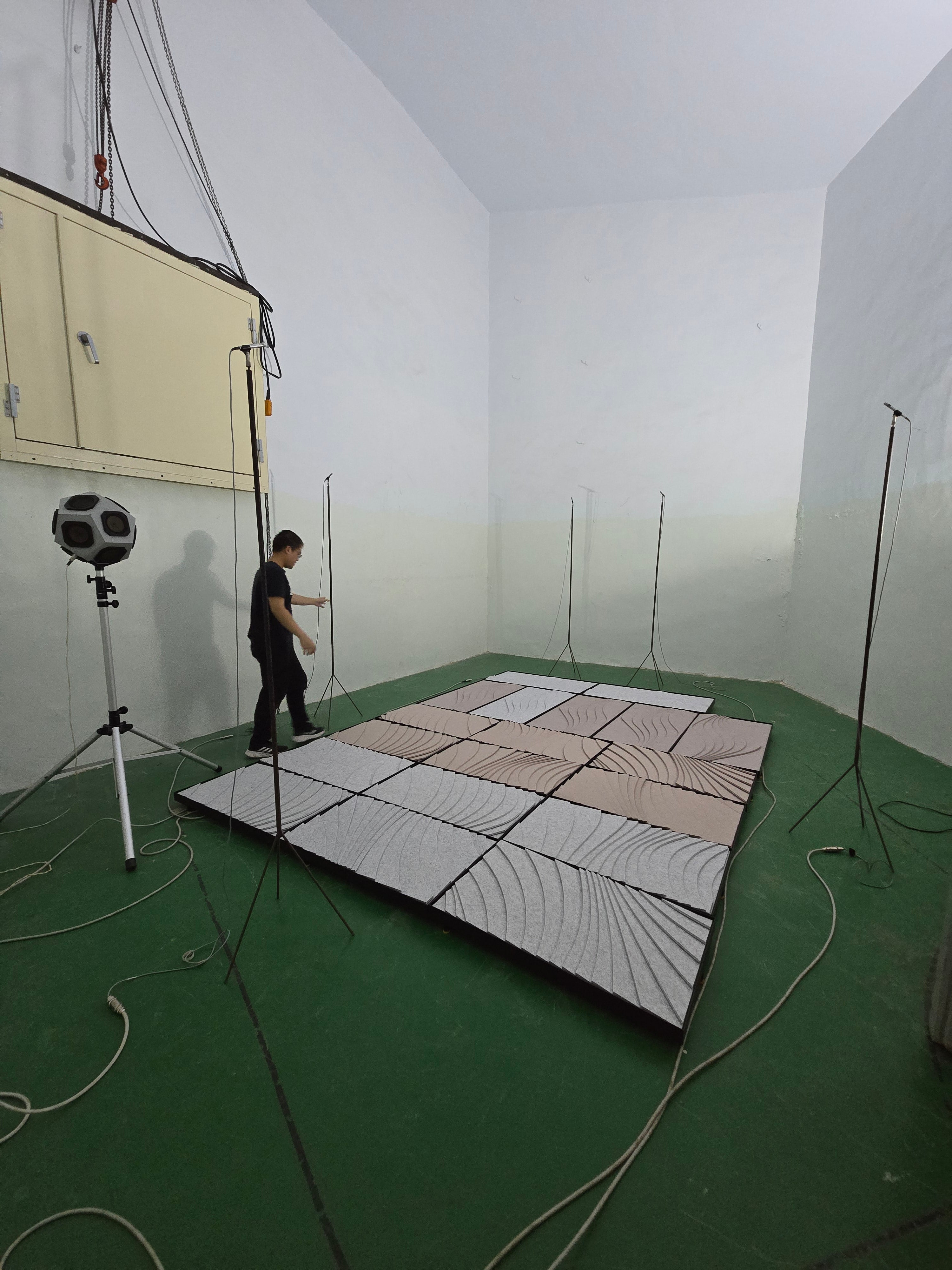About the Test
We partnered with the Acoustics Lab at National Taiwan Ocean University to run a certified absorption test using the ASTM C423-22 standard. This method measures how much sound energy a panel absorbs across frequencies using a reverberation chamber.
Two configurations were tested:
- Surge Panel + Air Gap
- Surge Panel + Modular Bass Trap
Both setups used real panel sizes and mounting conditions similar to actual rooms.
What the Results Show
In the Surge + Air Gap test:
- Strong absorption began around 315Hz
- NRC 1.0 performance (meaning nearly full absorption) kicked in around 500Hz
But when paired with the bass trap:
- NRC 1.0 performance appeared at ~315Hz, a full 150Hz lower
- And strong absorption began as early as 200Hz
| Frequency (Hz) | Surge + Air Gap | Surge + Bass Trap |
|---|---|---|
| 125 | 0.08 | 0.13 |
| 160 | 0.21 | 0.42 |
| 200 | 0.31 | 0.59 |
| 250 | 0.59 | 0.81 |
| 315 | 0.73 | 1.01 |
| 400 | 0.95 | 1.05 |
| 500 | 1.15 | 1.08 |
These are selected highlights from the official lab report.
As shown above, the bass trap helps reach NRC 1.0 absorption by 315Hz, compared to 500Hz without it. That’s a 150Hz improvement in low-end performance — meaning better clarity, tighter bass, and less boom.
That’s a significant shift in real-world performance — allowing deep frequency control with minimal added footprint.
📥 Download the official lab PDF (Chinese)
We’ll update this page with an English version soon. For now, here’s our raw report with key data highlighted.
What This Means
Most standard panels lose effectiveness below 500Hz — exactly where muddy low-end energy builds up. Our modular bass trap closes that gap.
Instead of adding 10cm of foam, you can stack a compact bass trap and shift your absorption curve downward by ~150Hz.
That’s design, not just material.















Share:
In-Room Test: Rhythm Pro Acoustic Panel
Beyond the Specs: Why Is NRC Over 1.0 Possible?